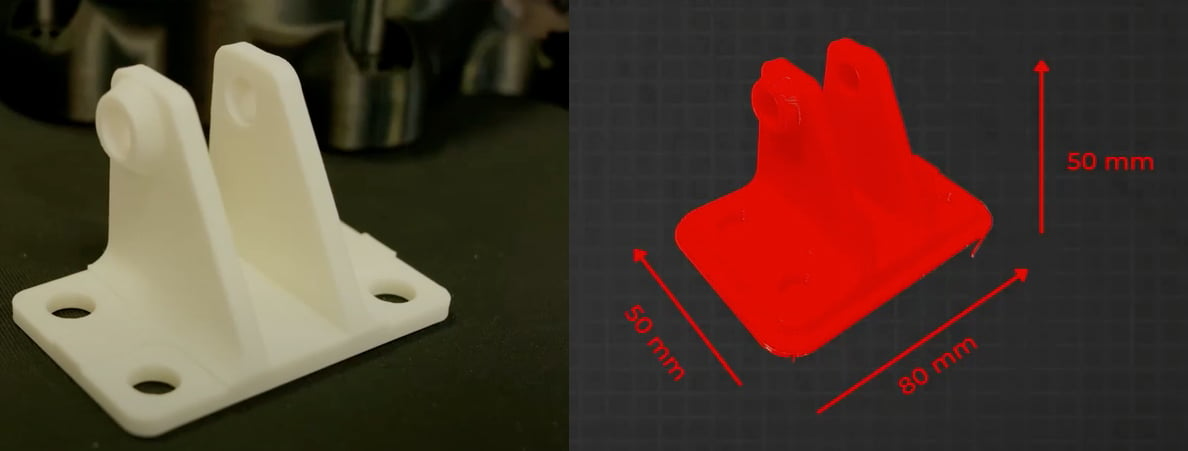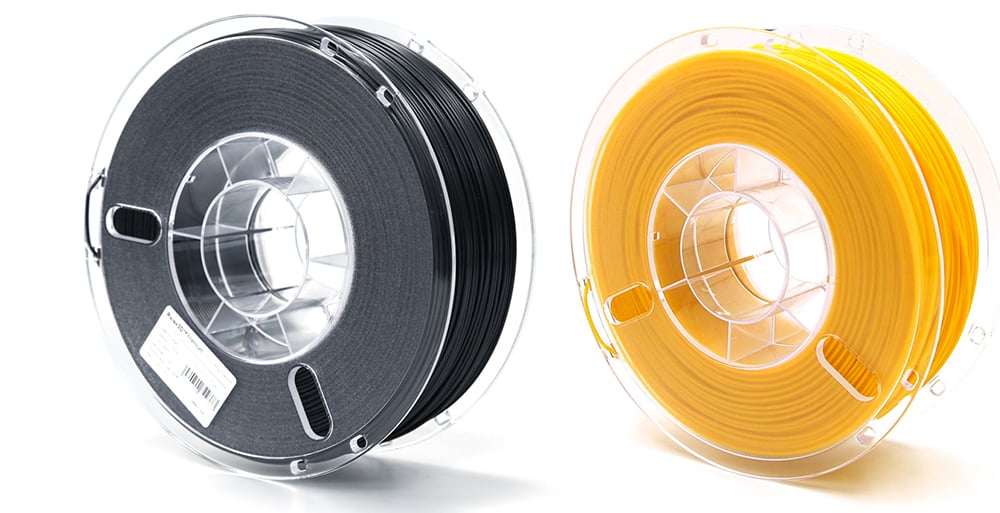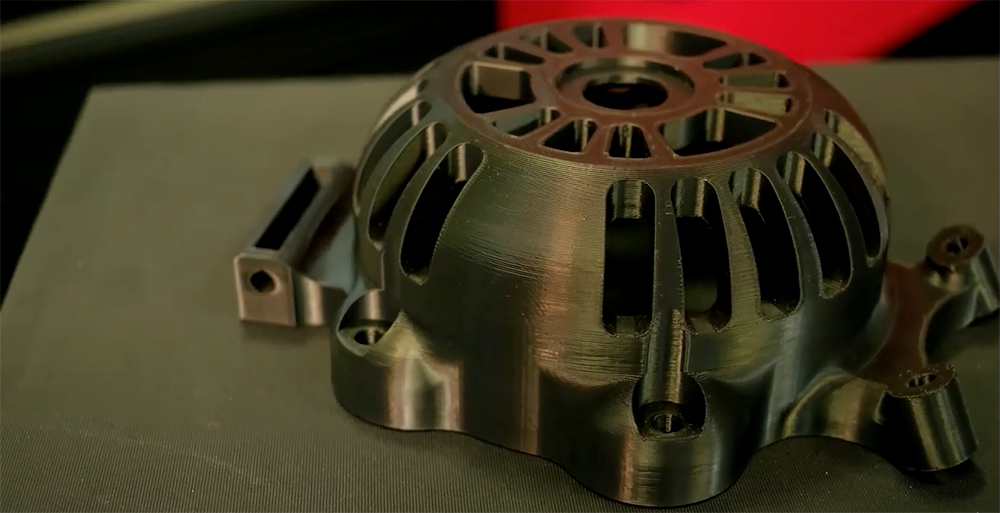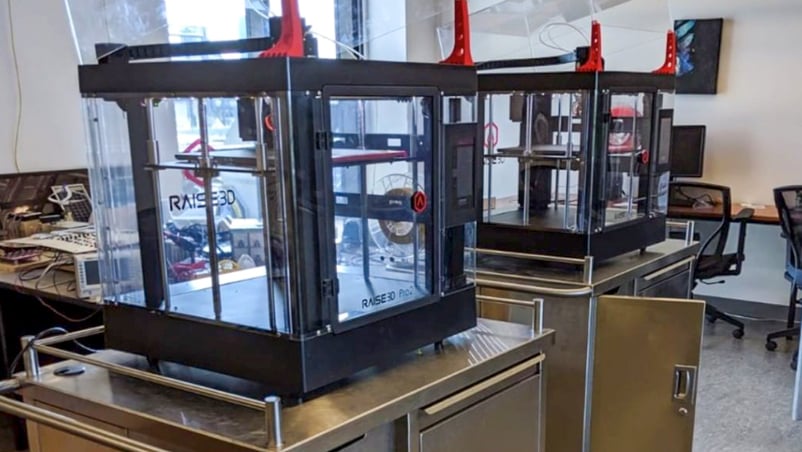Whether you’re working tirelessly at an industrial design firm or starting a home business or simply living your best life, sooner or later, you’re going to find a need for some custom-made parts, and there’s more than one way to get those parts from paper into the palms of your hands.
There are a number of manufacturers online that are willing to take a model of your part and reproduce it in a variety of methods. But not all manufacturing methods are created equal.
Two of the most familiar and traditional methods are CNC machining, which involves taking a block of material or a ‘blank’ and then milling away from the block to produce the part, and injection molding, which requires that a mold be made of the part beforehand, typically through CNC, and then that mold can be used thousands of times before a new one needs to be made.
The 3D printing methods we’ll be covering here are FDM, SLA (stereolithography), and SLS (selective laser sintering).
FDM uses plastic filament for printing and is available in the widest variety of materials, depending on the service. SLA refers, typically, to resin printing, where a vat with a clear base full of resin sits above a projector screen that uses UV to cure the liquid resin and then pulls away from the screen layer by layer. There’s a few types of resin available for different use cases, but currently, the most advanced resins are proprietary and the parts tend to be more brittle unless using a specifically flexible resin. Now, SLS uses a type of nylon powder that it lays down in thin layers over the full build area, and then it hits that layer with a laser to sinter it to the main part, and then it repeats with a whole new powder layer.
Method Cost Comparison

So, now that we have all the methods laid out, we can look at the costs. All the estimates that I have for production come directly from the manufacturers. I sent in a part for quotes, and we kept it relatively simple and something that could be produced by all methods. Of course, there are parts that would be extremely difficult for one method compared to others, but doing that wouldn’t be fair. So, we got quotes for this part in batches of 50. Now, some services are more optimized for lower part production and they won’t even consider production methods for lower quantities, so I wanted a decent sample size.
On the 3D printing side, estimates for FDM cap out at around $2,000. Again, this is for 50 parts. My cheapest quote was $140 for the whole batch. SLA came in significantly higher than FDM with $2,100 at the lowest and up to $7,000 at its most expensive. SLS varied a bit more similar to FDM with $785 for the lowest, and the highest at $3,150.
On the other end of the manufacturing spectrum, we have $1,300 to $1,990 for CNC aluminum and about $5,000 for injection molding. Injection molding’s unique in that breaking it down, we’re looking at $4,800 for the tooling and $300 for the batch of 50. If we wanted to produce more, of course, that would adjust accordingly.
Now, we did have one crazy outlier too, where the quote for getting the parts made out of aluminum was $21,545. It’s good to at least get a few quotes any time you’re looking just because of that random occurrence. Steel, on the other hand, from the same manufacturer, was only about $8,920. It didn’t specify which method it was using to make these parts out of those materials, but I guess it’s closer to SLS than CNC.
Another thing to consider when working with these manufacturers is lead time. Estimates were around three to eight days of lead time for 3D printed parts, and up to two weeks for CNC and injection molding parts, and then shipping time on top of that.
Outsource vs. Buy Your Own Printer

Thousand dollars sure seems like a lot for a 3D printer. Why spend that money when I can have my parts made elsewhere and sent to me for less? At a glance, that’s the much better option, but there’s a lot more to consider than just those dollar signs.
We’ve established that 3D printing a part can be less expensive and faster than traditional manufacturing, but now, let’s look at another scenario: What if I want to make the parts myself?
First, you need the machines to make the parts, and we’ll just assume that you already have the knowledge or someone in your organization who knows how to use them. For most capable CNC machines, you’d be looking at a five-axis machine compared to a three-axis machine. Now, for a five-axis machine, you’d be lucky to find a decent one under $100,000. An injection molder looks to be as low as $10,000 and up to $200,000.00, but the molds don’t come out of thin air. So, typically, there’s a CNC machine for the mold and then the injection molding machine. So, those costs would be combined, so around $110,000.
If that’s out of your budget, let’s take a look at 3D printers. We’ll be using the Raise3D Pro2 as our price and size baseline, so we’re looking for other machines of a similar size for comparison.
Looking at SLS, the lowest price sits around $10,000, but for any build volume close to 300 mm in X, Y, and Z, it rockets up to around $100,000. On SLA machines, the problem isn’t the price. You can get a usable machine for a couple of hundred dollars and a medium machine for around $2,000. These run volumes around 300 mm x 150 x 400, but to get closer to 300 mm in X, Y, and Z, we have to look more into a machine like the Formlabs Form 3L, which is a price tag of $10,000. Plus, you can be limited by the types of materials that are available to you.
Cost of Materials

Now, the last thing to consider is the cost of materials, FDM, SLA, and injection molding are the most effective in reducing waste during part production, with CNC being more wasteful due to it being a subtractive manufacturing process. In some cases, SLS powder cannot be entirely reused and needs to be mixed with fresh powder so that it does not degrade the part quality, or it may not even be reusable at all, but that seems to be the case with older machines.
So, in regards to this specific part, it takes 45.5 grams of material to print with 100 percent infill and 26.6 grams printed with a standard 15 percent infill. Using a material that costs about $30.00 per spool, we’re looking at costs of $1.37 and $0.80, respectively, for those two infills. Now, comparing that to our manufacturer estimates, even at the lowest cost, producing parts is still over 100 percent cheaper on a part-to-part basis when looking at FDM printing.
So, given that the cost of the Pro2 is $4,000, at the rates mentioned before with this specific part, we would need to produce 3,000 units for the savings on these parts alone to fully pay for the Pro2 itself. Now, granted, it all depends on the part being produced and these machines are used for making more than just a single type of part. The most effective case is for larger-scale, single-use prototypes.

As a real example, this part pictured above costs roughly $20 in material when printed in-house. That’s $100 cheaper than the estimates I got from our cheapest manufacturer. I do want to clarify that this is for one of these parts.
Now, the price will typically go down if larger amounts of parts are needed, so if we say that all the parts will be one-off productions, then the Pro2 pays for itself in this case within 40 prints. Now, that’s using the cheapest option available, PLA material. If we step it up into nylons, the difference in prices jumps to $370 per single production, meaning that the Pro2 will pay for itself in just over 10 prints, and that’s not even using the full build volume.
On top of this, a few other advantages are that owning your own machine gives you absolute control over the part construction. In some cases, third parties will only let you choose between a handful of resolutions or infill settings.
3D Printing vs Traditional for Speed

There is also the lead time factor. So, when producing these parts en masse with my own machine here, it takes me roughly 10 days of print time to complete a batch of 50 on one machine with 100 percent infill. That’s comparable to a third-party lead time, but I get the parts as soon as they finish and they don’t all complete at once. So, rather than waiting around 12 days for 50 parts, I can have 15 made every three days, and even every two days when we lower the infill. The one caveat, in this case, is that I do need to be there to remove the parts and restart it between batches.
Given the costs of manufacturing currently, for low-volume custom parts, either for regular use or single-use prototyping, owning a 3D printer is hands down the best way to go. Optimized templates and IdeaMaker – the Raise3D slicing software – allow new users to start printing right away, but they also allow for a massive amount of customization and adjustments on parts if needed, and the scale of the Pro2 and the Pro2 Plus ensures that you won’t be limited on size when it’s most important.
View this article in video format.
Nick Phalen is a development engineer at Raise3D.
Lead image source: Raise3D
License: The text of "Traditional vs. Additive Manufacturing Price Comparison" by All3DP Pro is licensed under a Creative Commons Attribution 4.0 International License.
